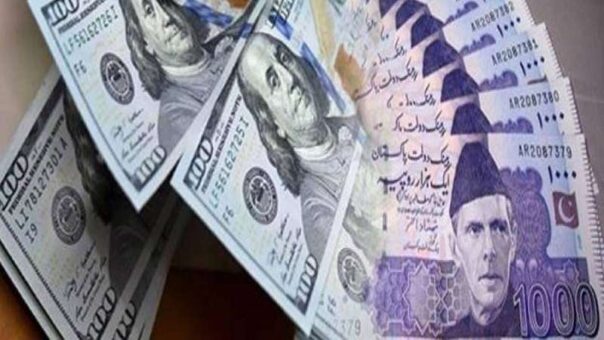Karachi, March 4, 2024 – The US Dollar witnessed a modest appreciation of PKR 0.07 against the Pakistani Rupee on Monday, closing at PKR 279.26 in the interbank foreign exchange market.
This slight uptick follows the last Friday’s closing rate of PKR 279.17, with currency experts attributing the increase to the typical rise in demand for foreign currency on the first day of the trading week.
Currency market analysts have highlighted the surge in demand for the US Dollar, particularly for imports and corporate payments, as the primary driver behind the depreciation of the Pakistani Rupee. The downward trend is further exacerbated by a decline in foreign exchange reserves, putting pressure on the local currency against the greenback.
As of the week ending February 23, 2024, Pakistan’s total exchange reserves amounted to $13.039 billion, indicating a decline from the previous week’s $13.098 billion (February 16, 2024). The reduction in reserves has raised concerns among economic analysts, who identify it as a significant factor contributing to the weakening of the rupee.
While the decrease in reserves and the subsequent depreciation of the rupee are noteworthy, it is crucial to contextualize these figures. Even with the decline, the current reserves remain higher than those observed in August 2021, during a different economic landscape for Pakistan.
August 2021 marked a period of economic challenges for Pakistan, characterized by a widening current account deficit, inflationary pressures, and uncertainty related to the global COVID-19 pandemic. At that time, the country was negotiating with the International Monetary Fund (IMF) to secure a bailout package and ensure financial stability.
Comparing the current situation to that of August 2021 underscores the resilience of Pakistan’s economy in the face of evolving circumstances. While challenges persist, the nation has made progress in addressing economic vulnerabilities and establishing a more stable financial environment.
Market observers emphasize that closely monitoring and managing the balance between imports and exports, coupled with prudent fiscal policies, will be essential in mitigating the impact of external factors on the exchange rate. Policymakers are also expected to concentrate on bolstering foreign exchange reserves to enhance the country’s capacity to withstand economic shocks.
The interventions and monetary policy decisions of the Central Bank are likely to play a crucial role in stabilizing the currency and addressing concerns related to foreign exchange reserves. The demonstrated resilience in the past, combined with proactive measures, could contribute to restoring confidence in the economy and maintaining a stable currency in the months ahead. Investors and stakeholders are advised to stay vigilant and informed as the economic landscape continues to evolve.
